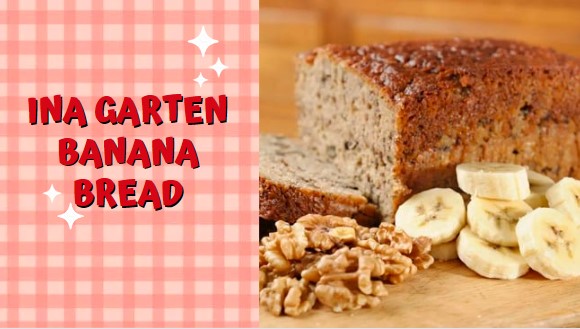Sourdough brioche combines the rich, buttery texture of traditional brioche with the subtle tang and enhanced texture of sourdough fermentation. This delightful pastry is a luxurious twist on classic bread recipes, offering a depth of flavor that yeast-based brioche can’t match.
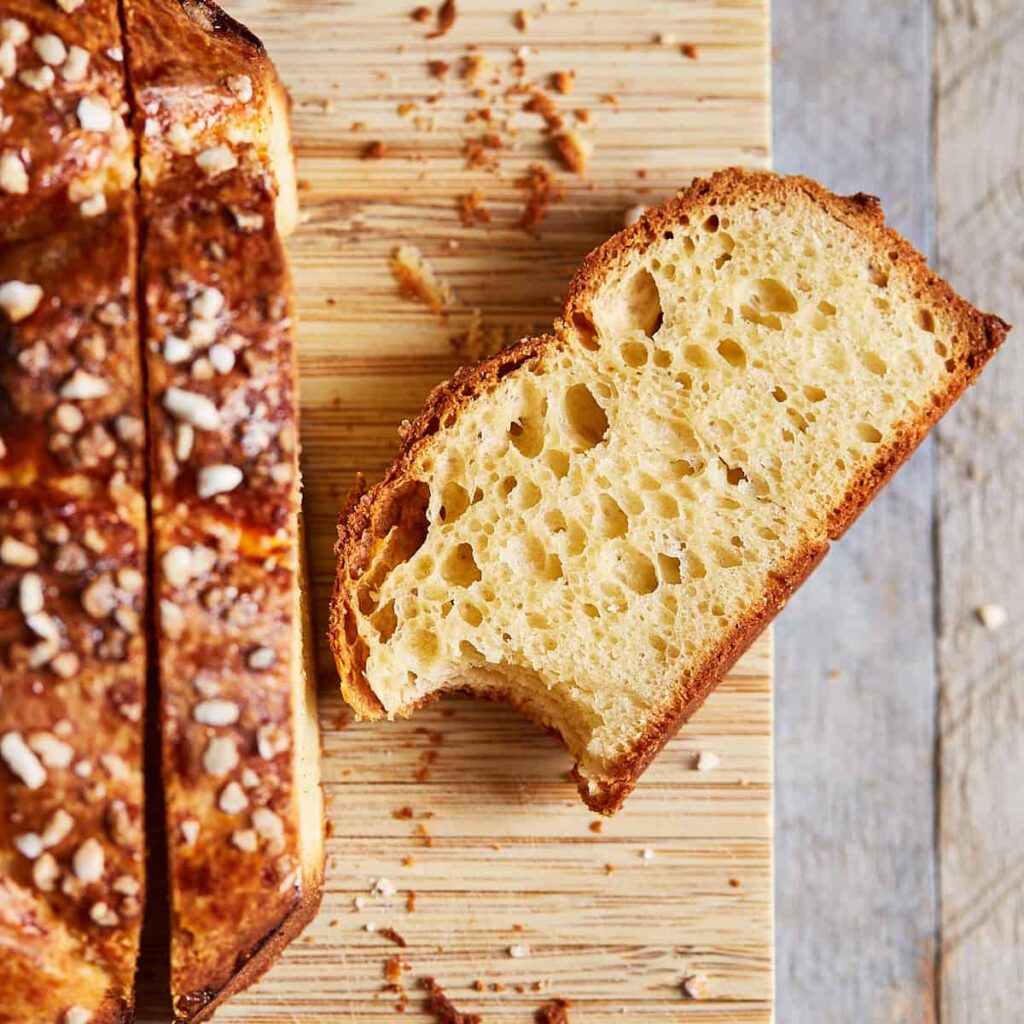
Creating sourdough brioche starts with a mature sourdough starter, which is mixed with high amounts of eggs and butter, along with flour and a touch of sugar. The process requires patience as the dough undergoes a slow fermentation, typically overnight. This not only develops its distinctive sour flavor but also results in a wonderfully light and tender crumb.
The versatility of sourdough brioche is one of its most appealing traits. It can be shaped into loaves or individual rolls, making it perfect for a decadent breakfast, an elegant dinner side, or a base for desserts. Whether slathered in jam or used as the foundation for an indulgent French toast, sourdough brioche elevates any meal with its exquisite texture and complex flavor profile.
Kitchen Tools Needed
Ingredients for Sourdough Brioche

How To Make Sourdough Brioche?
Preparing the Dough
Begin by activating your sourdough starter. Ensure it’s bubbly and active for optimal rise. In a large mixing bowl or the bowl of your stand mixer, combine the flour, sugar, and room temperature milk. Add the active sourdough starter and mix until just combined. Let this mixture sit for about 20 minutes, allowing the flour to hydrate.
Adding Eggs and Butter
After the resting period, add the eggs and salt to the dough. Using the dough hook attachment on your stand mixer, knead the mixture on a medium-low setting. Once the eggs are fully incorporated, start adding the softened butter in increments. Wait until each piece of butter is completely integrated into the dough before adding the next. This process is crucial and might take some time, ensuring the dough is silky and elastic.
First Fermentation
Once the dough is smooth and pulls away from the sides of the bowl, transfer it to a lightly greased bowl. Cover the bowl with plastic wrap or a damp cloth and let it rise at room temperature until it doubles in size, which might take 6 to 8 hours depending on the strength of your starter and the temperature of your environment.
Shaping the Dough
After the first rise, gently deflate the dough on a lightly floured surface. You can then shape it according to your preference: into a loaf, individual brioche buns, or even a braided structure. Place the shaped dough into the greased loaf pan or brioche molds.
Second Fermentation
Cover the shaped dough loosely with plastic wrap and let it rise again until puffy and nearly doubled in size, which can take about 2 to 4 hours. Preheat your oven to 375°F (190°C) towards the end of this rising period.
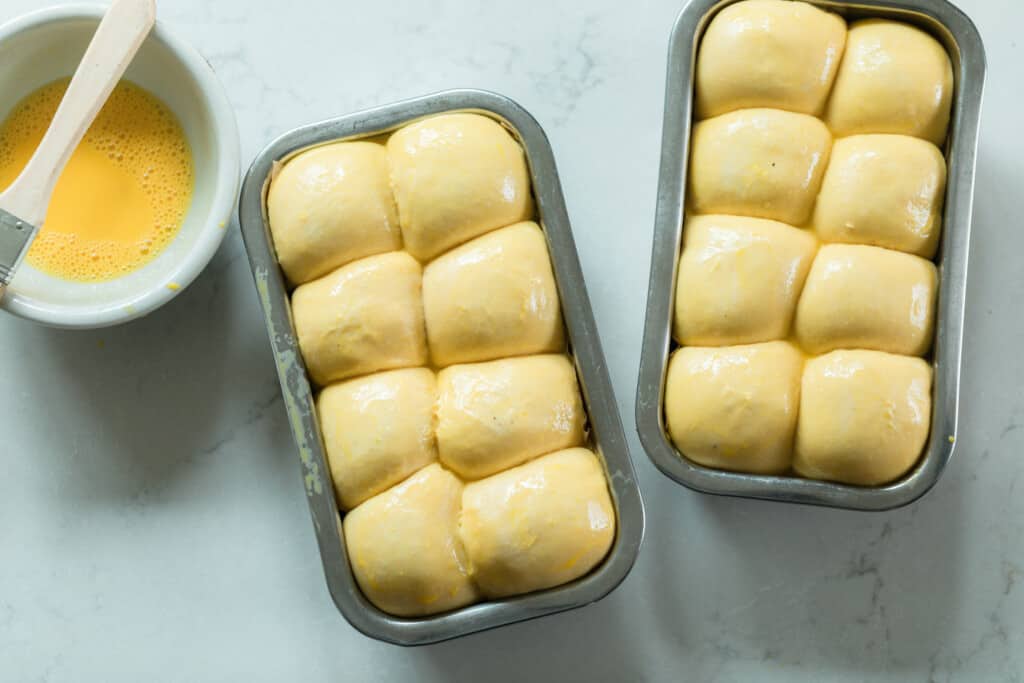
Baking the Brioche
Just before baking, gently brush the surface of the dough with beaten egg yolk. This will give your brioche a rich, golden color and a glossy finish. Bake in the preheated oven for about 20 to 30 minutes, or until the brioche is golden brown on top and sounds hollow when tapped underneath. The exact time will depend on the size and shape of your brioche.
Cooling
Remove the brioche from the oven and let it cool in the pan for about 10 minutes. Then, transfer it to a wire rack to cool completely. If desired, you can brush the hot brioche with simple syrup to add a sweet, shiny finish.
Serving
Your sourdough brioche is now ready to be sliced and enjoyed. It pairs wonderfully with jams, creams, or simply a touch of butter. The rich, buttery layers and subtle tang from the sourdough make it a delightful treat for any occasion.
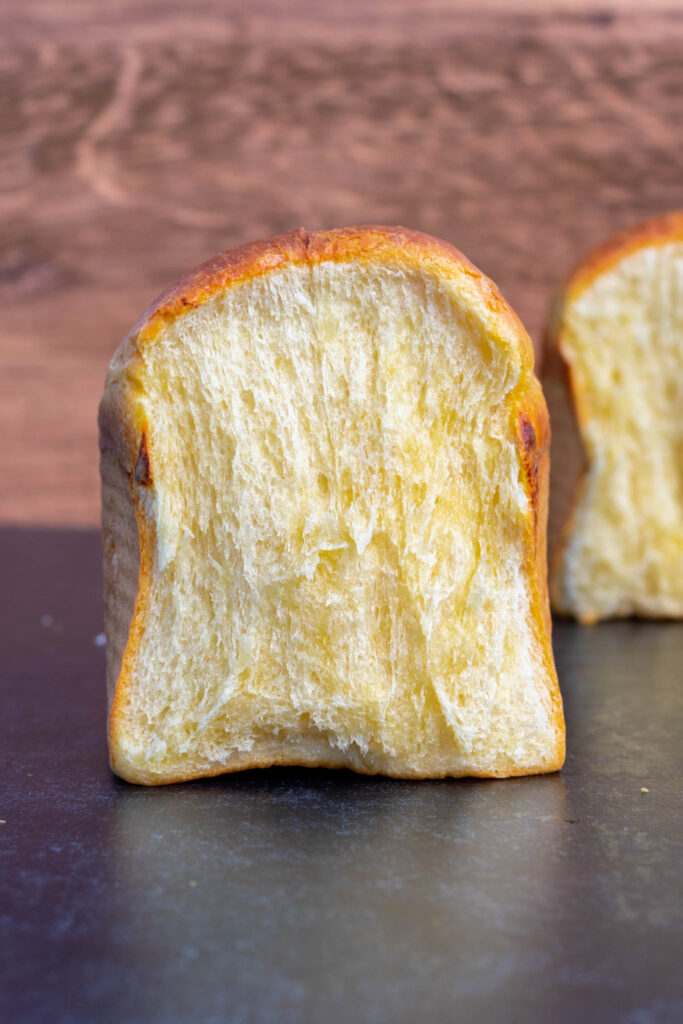
What Goes Best With Sourdough Brioche?
- Fresh Fruit Compote: Serve a warm or chilled fruit compote, such as mixed berries or spiced apples, alongside the brioche for a delightful blend of flavors.
- Whipped Mascarpone Cream: A dollop of lightly sweetened mascarpone cream can add a luxurious touch, perfect for breakfast or brunch.
- Nutella or Almond Butter: Spread these rich nut butters for a nutty, creamy texture that complements the tangy notes of the sourdough.
- Sliced Aged Cheese: Pair slices of aged cheddar or gouda with the brioche for a savory contrast that balances the sweetness.
- Smoked Salmon and Cream Cheese: Top the brioche with smoked salmon, a smear of cream cheese, and a sprinkle of capers for a gourmet brunch option.
- Caramelized Onions and Goat Cheese: Add a savory twist by topping your brioche with caramelized onions and a crumble of tangy goat cheese.
- Honey and Greek Yogurt: Drizzle honey over a slice of brioche served with a side of thick Greek yogurt for a simple, satisfying snack.
- Avocado and Poached Egg: For a heartier meal, top brioche with smashed avocado and a perfectly poached egg, seasoned with a pinch of salt and pepper.
- French Toast Style: Use the brioche to make French toast, serving it with maple syrup and a sprinkle of powdered sugar for a classic breakfast treat.
Health Benefits
Improved Digestibility: Sourdough fermentation breaks down gluten more effectively than traditional yeast breads, making sourdough brioche easier to digest for many people. This process also reduces the bread’s phytate content, which can inhibit the absorption of minerals.
Enhanced Nutrient Availability: The fermentation process increases the availability of important nutrients in the flour, such as folate and other B vitamins. It also helps in the absorption of minerals like iron, zinc, and magnesium, thanks to the reduction of phytic acid.
Natural Preservative Qualities: The lactic acid produced during fermentation acts as a natural preservative, helping sourdough brioche stay fresh longer than most commercially produced breads without the need for artificial preservatives.
Glycemic Control: Sourdough brioche can have a lower glycemic index compared to regular brioche. The acidity developed during sourdough fermentation may help in moderating blood sugar levels, making it a more suitable option for those managing insulin sensitivity.
Probiotic-Like Benefits: While baking kills the live bacteria in the sourdough, the lactic acid bacteria present during fermentation can modify the bread’s pH, creating positive effects on gut health similar to those offered by probiotic foods.
Rich In Antioxidants: Depending on the type of flour used, sourdough brioche can be higher in antioxidants compared to other breads, particularly those made from whole grains.
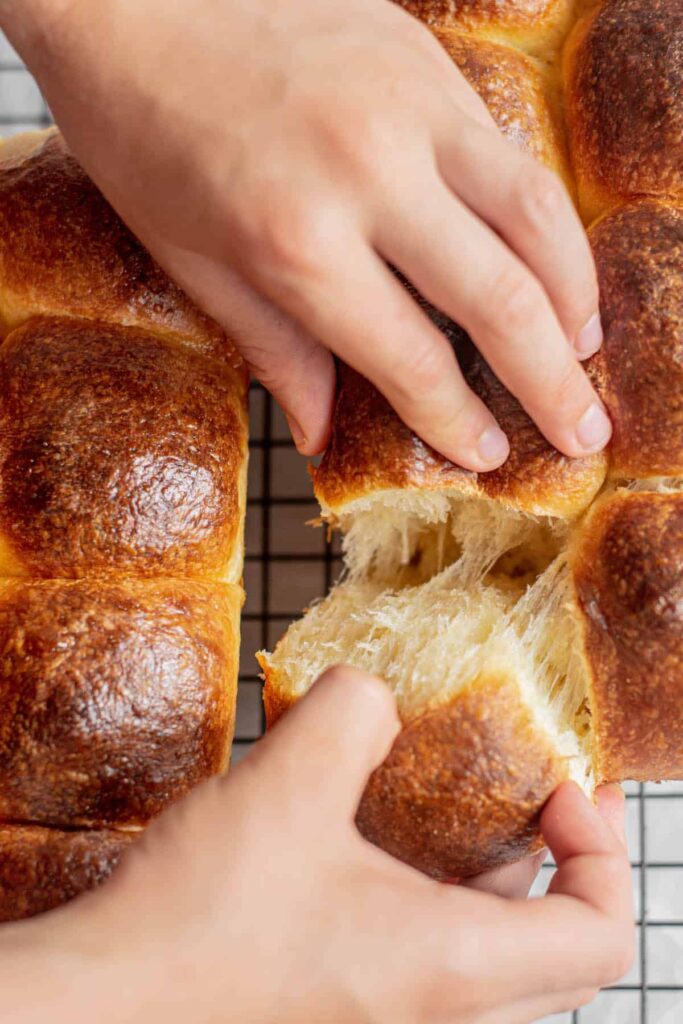
Tips and Tricks
Maintain a Strong Starter: Ensure your sourdow starter is active and healthy. Feed it regularly and allow it to reach its peak activity before using it in your brioche dough for the best rise and flavor.
Control the Temperature: Sourdough fermentation is highly sensitive to temperature. Keep your dough in a warm, draft-free area to help it rise consistently. Around 75°F (24°C) is ideal for sourdough.
Use High-Quality Butter: Since butter is a key ingredient in brioche, opt for high-quality, unsalted butter for better flavor and texture. Allow it to reach room temperature so it integrates smoothly into the dough.
Do Not Rush the Proofing Time: Patience is vital with sourdough brioche. Rushing the fermentation and proofing processes can result in a dense loaf. Allow the dough to increase in volume slowly, which could take several hours.
Perform the Windowpane Test: To check gluten development, stretch a small piece of dough between your fingers. If it can stretch thin enough to let light pass through without tearing, the gluten is well developed.
Chill the Dough: If the dough becomes too soft to shape, refrigerate it for 30 minutes. This makes it easier to handle and helps maintain its structure.
Apply Egg Wash Evenly: For a golden, glossy finish, brush the brioche with egg wash just before baking. Ensure even coverage to avoid burning any spots during baking.
Invest in Good Baking Tools: Using proper brioche molds or a well-greased loaf pan helps in achieving the classic, beautiful shape of brioche without sticking.
Check Oven Temperature: Use an oven thermometer to ensure the accuracy of your oven’s temperature setting. Baking at the correct temperature is crucial for achieving the perfect texture.
Cool Before Slicing: Allow the brioche to cool completely on a wire rack before slicing to prevent it from becoming gummy or squashed.
Variations of Sourdough Brioche
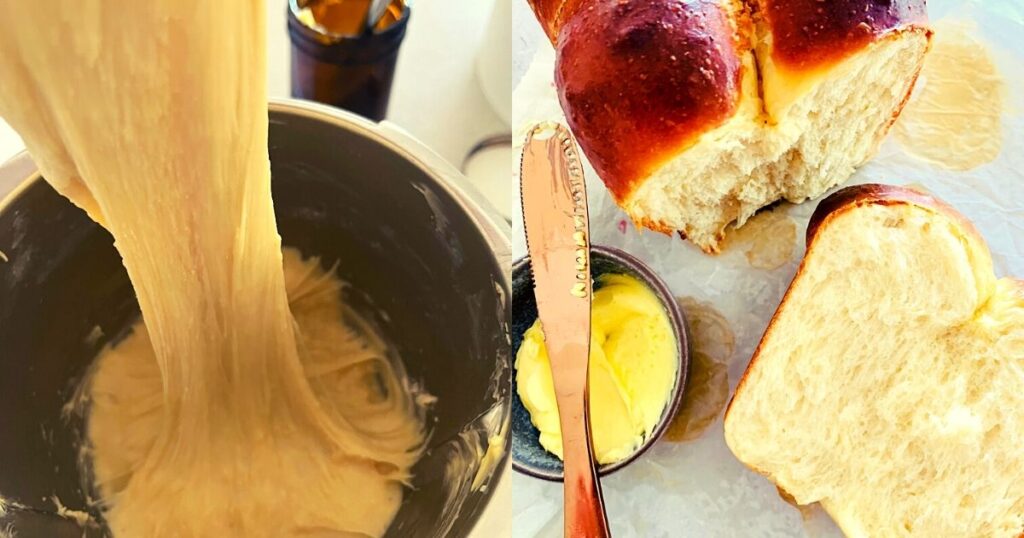
Substitutions for Sourdough Brioche
Making Ahead
Sourdough brioche dough can be prepared in advance to streamline your baking process. Prepare the dough through its initial fermentation, then shape it as desired and refrigerate it overnight or up to 24 hours. This not only saves time but can also enhance the flavor and texture of the brioche. Allow the dough to come to room temperature and complete its final proof before baking.
Storage
Reheating
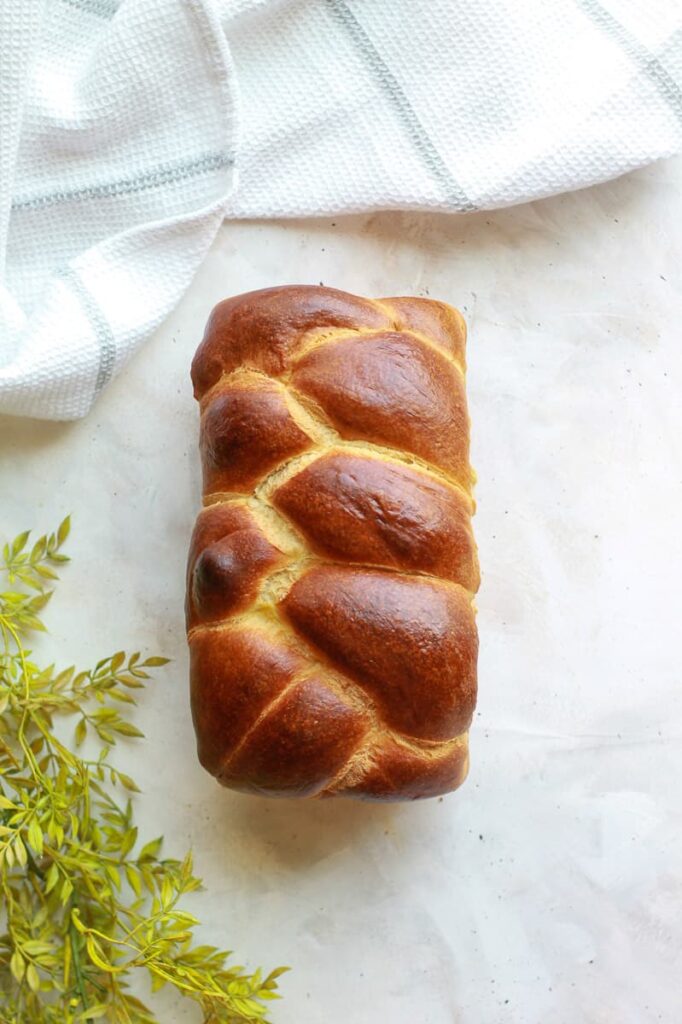
Nutritional Facts
Delicious Breakfast Ideas
Perfect Chocolate Sourdough Bread Recipe
Frequently Asked Questions – FAQ’s
Sourdough Brioche
Course: BreakfastCuisine: FrenchDifficulty: Medium4
servings30
minutes250
kcalIngredients
Sourdough Starter: 100 grams (active and bubbly)
All-Purpose Flour: 250 grams
Eggs: 2 large
Unsalted Butter: 115 grams, softened
Sugar: 30 grams
Milk: 50 ml (room temperature)
Salt: 1 teaspoon
Egg Yolk: 1 (for egg wash)
Optional: Pearl sugar or simple syrup for finishing
Directions
- Begin by activating your sourdough starter. Ensure it’s bubbly and active for optimal rise. In a large mixing bowl or the bowl of your stand mixer, combine the flour, sugar, and room temperature milk. Add the active sourdough starter and mix until just combined. Let this mixture sit for about 20 minutes, allowing the flour to hydrate.
- After the resting period, add the eggs and salt to the dough. Using the dough hook attachment on your stand mixer, knead the mixture on a medium-low setting. Once the eggs are fully incorporated, start adding the softened butter in increments. Wait until each piece of butter is completely integrated into the dough before adding the next. This process is crucial and might take some time, ensuring the dough is silky and elastic.
- Once the dough is smooth and pulls away from the sides of the bowl, transfer it to a lightly greased bowl. Cover the bowl with plastic wrap or a damp cloth and let it rise at room temperature until it doubles in size, which might take 6 to 8 hours depending on the strength of your starter and the temperature of your environment.
- After the first rise, gently deflate the dough on a lightly floured surface. You can then shape it according to your preference: into a loaf, individual brioche buns, or even a braided structure. Place the shaped dough into the greased loaf pan or brioche molds.
- Cover the shaped dough loosely with plastic wrap and let it rise again until puffy and nearly doubled in size, which can take about 2 to 4 hours. Preheat your oven to 375°F (190°C) towards the end of this rising period.
- Just before baking, gently brush the surface of the dough with beaten egg yolk. This will give your brioche a rich, golden color and a glossy finish. Bake in the preheated oven for about 20 to 30 minutes, or until the brioche is golden brown on top and sounds hollow when tapped underneath. The exact time will depend on the size and shape of your brioche.
- Remove the brioche from the oven and let it cool in the pan for about 10 minutes. Then, transfer it to a wire rack to cool completely. If desired, you can brush the hot brioche with simple syrup to add a sweet, shiny finish.
- Your sourdough brioche is now ready to be sliced and enjoyed. It pairs wonderfully with jams, creams, or simply a touch of butter. The rich, buttery layers and subtle tang from the sourdough make it a delightful treat for any occasion.
Conclusion
Sourdough brioche stands out as a splendid fusion of traditional brioche’s buttery softness with the nuanced tang of sourdough fermentation. Its complex flavor profile and delicate texture make it a versatile favorite in both savory and sweet culinary applications. From a rich breakfast bread to an elegant dinner accompaniment or a base for decadent desserts, sourdough brioche enriches any meal.
While the process of making it requires patience and precision, the end result is profoundly rewarding. Embracing the slow fermentation allows for the development of flavors and textures that are simply not achievable with quick yeast breads. This brioche not only tastes exceptional but also offers a more digestible and nutritious option, making every slice worth the effort.





